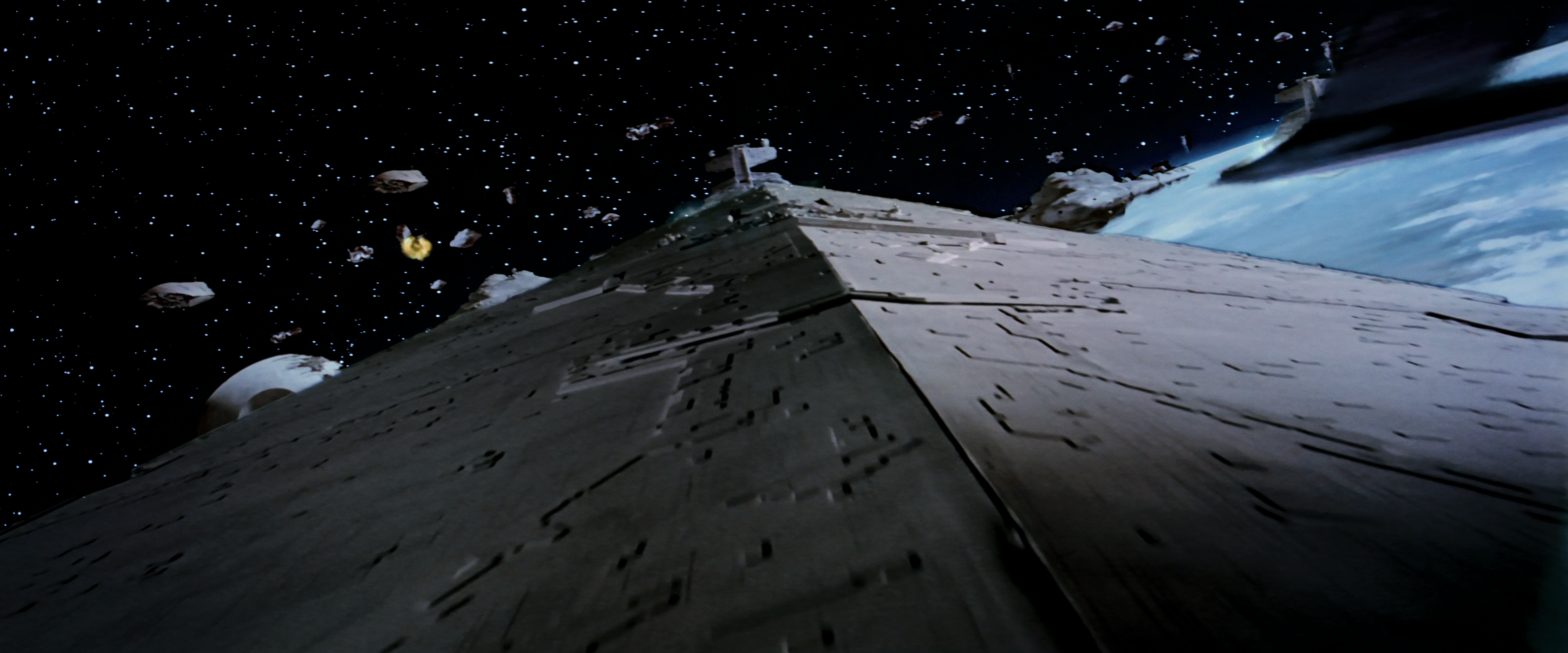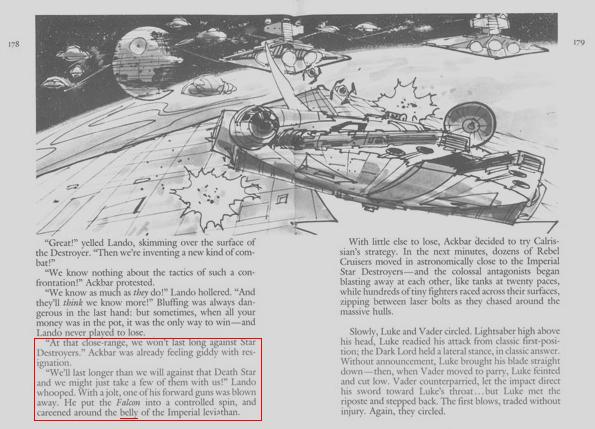It was a 1.6-kilometer-long dagger-shaped vessel, essentially a version of the contemporary Imperial-class, with ventral hangars absent. Instead of ventral hangar bays, the design opted for an increase in armor that covered the areas normally used as main hangar openings, as well as the reactor core.
This made the design more efficient in ship-to-ship combat, as it had less access to internal weak-spots. However, it limited its usefulness in other roles. Being without hangars, it required dedicated carriers to provide any starfighter support.

A Tector-class Star Destroyer participated in the Battle of Endor.
The Tector-class was first produced by Kuat Drive Yards during the Clone Wars. It, along with the Imperator-class, was one of the largest Republic warship classes fielded during the conflict. In the first months of the war, the Tector-class was produced in small numbers to test their capabilities before a full-scale production could begin. One such vessel, the Gibbon, was sabotaged with a computer virus by Separatist agents while at Handooine and subsequently participated in the Battle of Salvara. The virus spread around the task force, leading the ships to lower their shields at a certain range of the enemy, turning the battle into a rout for the Republic. This and other incidents led to a delay in the production of the Tector-class and the ships served only in a few task forces during the conflict. At one point, three Tector-class Star Destroyers participated in an Imperial Office of Customs blockade with several TIE fighters as support.
Another Tector-class Star Destroyer active during the Clone Wars was the Archer. In the years following the rise of the Galactic Empire, the Tector-class and its sister-design supplanted the less robust Venator-class, leading to it being phased out of frontline duty. The class served the Empire for decades. Three of these vessels participated in the climactic Battle of Endor in 4 ABY, with one being lost to Rebel fire.

An image of a Tector from the Illustrated Return of the Jedi novelization
The first official reference to the Tector-class Star Destroyer occurred in Star Wars: Revenge of the Sith Incredible Cross-Sections. The inspiration for the Tector-class was a ship that was briefly spotted in Return of the Jedi.
During the Battle of Endor, the Millennium Falcon flew beneath a warship which did not have the two ventral hangars standard on Imperial-class Star Destroyers. Additionally, the reactor bulb was covered up by armored plating and was not visible. Other sources, such as the Return of the Jedi novelization, supported the idea that Millennium Falcon did in fact fly over the underside of a ship with no ventral hangars. The concept art featured in this book corresponds with the scene in the film itself, with the text showing both matching dialogue and action between the film and novelization.
On February 6th, 2007, Leland Chee confirmed on the Official Message Board that the hangarless ship seen briefly in Return of the Jedi is a Tector-class Star Destroyer.
According to the University of Notre Dame's online Latin Dictionary and Grammar Aid, the word "Tector" means "a plasterer"; however, the ending -tor can be added to the stems of masculine verbs to produce nouns. The Latin verb tectus carries the meaning "decked," "covered," "defended," "guarded," etc.; thus tector in Latin may also mean "one who is guarded," "one who is defended," "one who is decked/armored," etc., and does not necessarily refer exclusively to a plasterer or stucco-worker.
- Star Wars Customizable Card Game — Death Star II Limited
- Star Wars: Revenge of the Sith Incredible Cross-Sections
- Star Wars: Complete Cross-Sections
- Star Wars: The Clone Wars: The Visual Guide
- The Complete Star Wars Encyclopedia
- Star Wars: The Clone Wars – The Official Episode Guide: Season 1
- Star Wars: The Official Starships & Vehicles Collection 32
- The Essential Guide to Warfare
- Star Wars: Complete Vehicles
- Star Wars: The Card Game — Swayed by the Dark Side